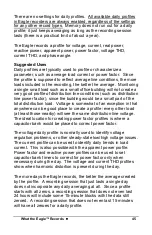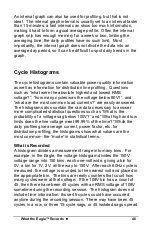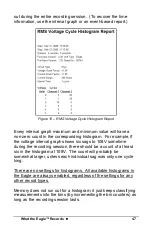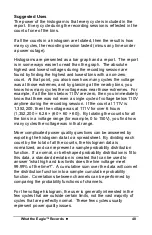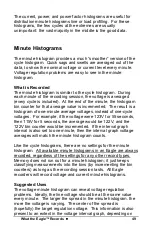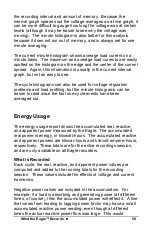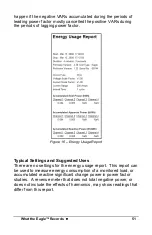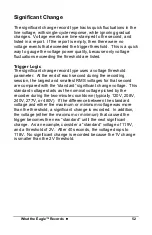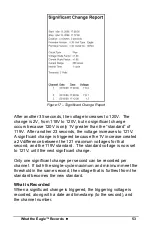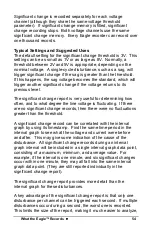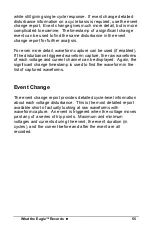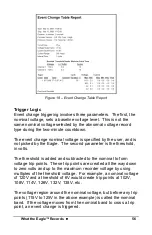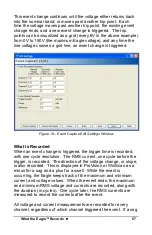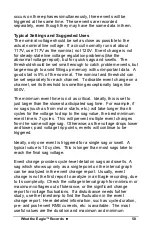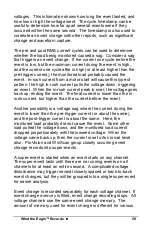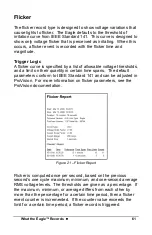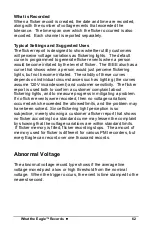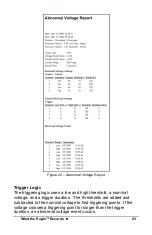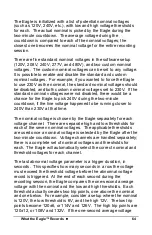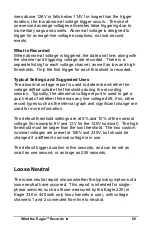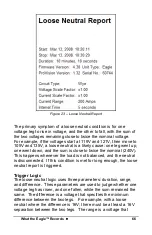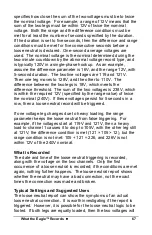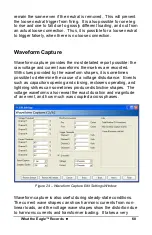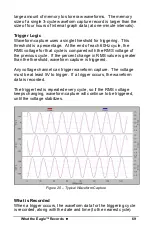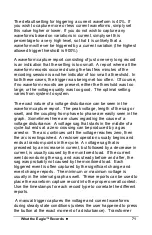
What the Eagle™ Records
••••
59
voltages. This information shows how long the event lasted, and
how low or high the voltage went. The cycle timestamp can be
useful to determine how far apart several events were if they
occurred within the same second. The timestamp is also used to
correlate an event change with other reports, such as significant
change and waveform capture.
The pre and post RMS current cycles can be used to determine
whether the load being monitored caused a sag. Consider a sag
that triggers an event change. If the current one cycle before the
event is low, but the maximum current during the event is high,
and the current one cycle after is high (or at least higher than the
pre-trigger current), the monitored load probably caused the
event. In-rush current from a motor start will cause this type of
pattern: the high in-rush current pulls the voltage down, triggering
an event. When the in-rush current peak is over, the voltage goes
back up, ending the event. The final current is lower than the in-
rush current, but higher than the current before the event.
Another possibility is a voltage sag where the current during the
event is lower than the pre-trigger current (or about the same),
and the post-trigger current is about the same. Here, the
monitored load probably did not cause the event. Some other
load pulled the voltage down, and the monitored load current
dropped proportionately with the lowered voltage. When the
voltage came back up, then the current rose to its normal level
also. ProVision and WinScan group closely occurring event
change records into super-events.
A super-event is started when an event starts on any channel.
The super-event lasts until there are no running events on all
channels for at least an entire second. A complicated voltage
disturbance may trigger several closely spaced or back-to-back
event changes, but they will be grouped into a single super-event
for easier analysis.
Event change is recorded separately for each voltage channel. If
event change memory is filled, event change recording stops. All
voltage channels use the same event change memory. The
amount of memory used for event change is different for various

